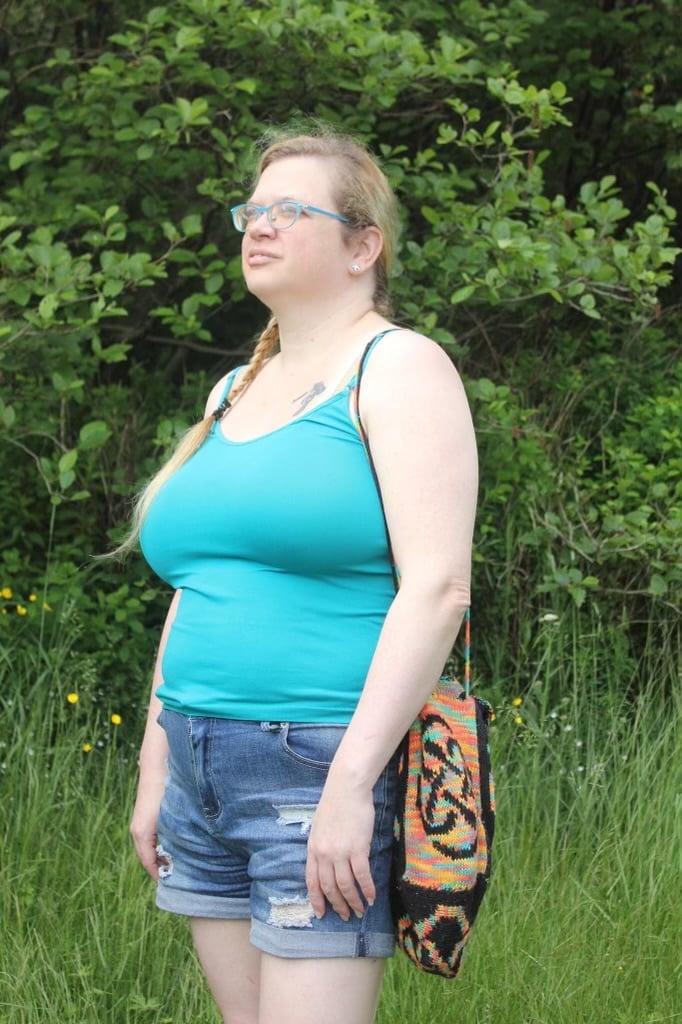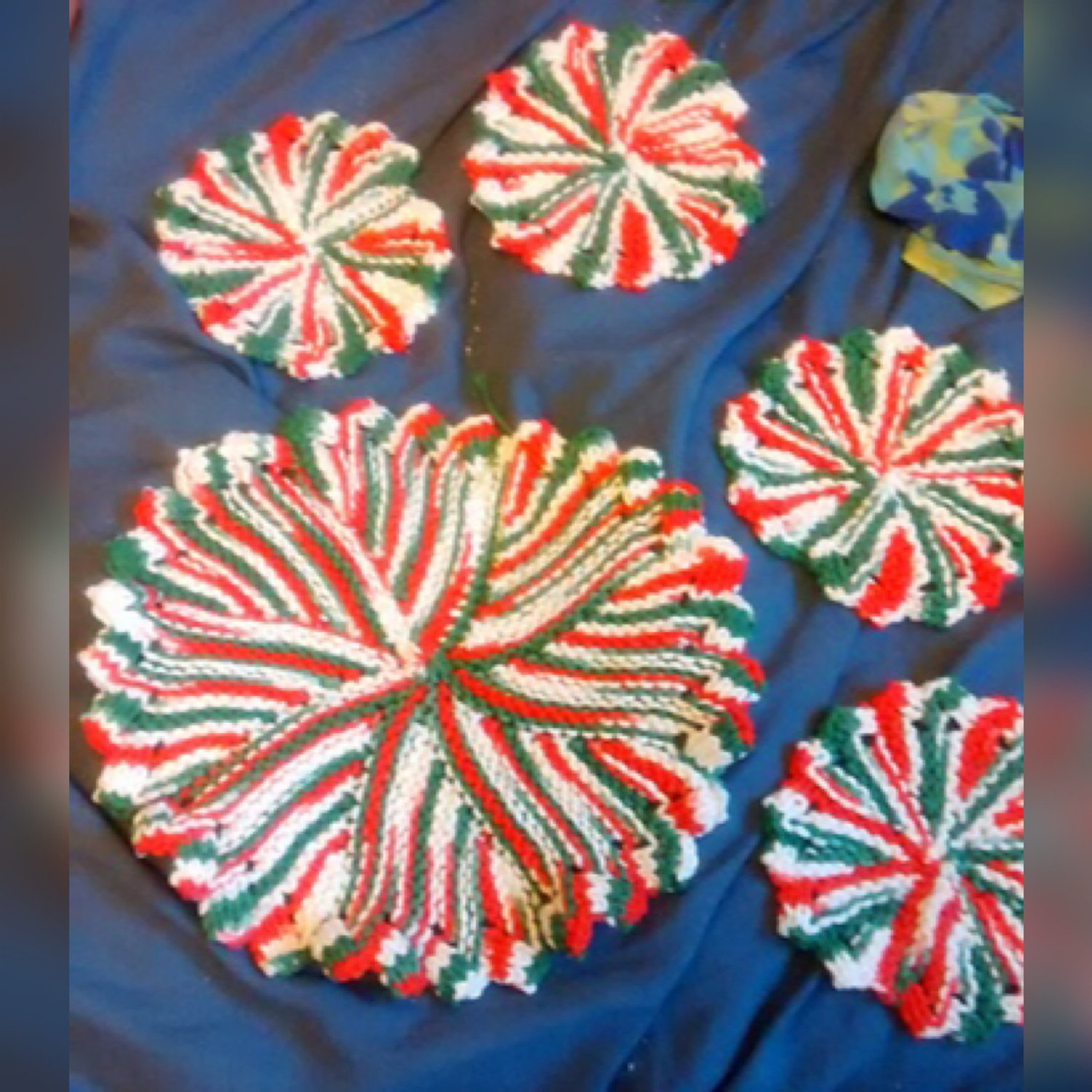Hornpipe Bag
On Sale
CAD8.00
Pay what you want:
(minimum CA$8.00)
CAD
The hornpipe is another hard (or heavy) shoe dance. Hornpipes most often have a time signature of 2/4, but sometimes 4/4 is heard.
Going with the uniqueness of the hornpipe’s time signature, I decided to go in a bit of a different direction. Using two colors, the Hornpipe Bag is done in a colorwork technique called double-knitting and is completely reversible, plus there are no floats to catch on any items you choose to carry in it. It makes an excellent project bag or even a shoe bag for your ghillies.
The Hornpipe Bag is worked from the bottom up: the bottom is knit in rows, then stitches are picked up around the edge and the sides are knit in the round. I-cord drawstrings finish off the bag.
I have used charts for the double-knitting with written instructions for the basic mechanics of knitting the bag.
Materials
My pictured sample was knit with Patons Kroy Socks (75% wool, 25% nylon; 166 yds/152 m = 50g) in color “55040 Coal” for the Main Color and Bernat Sox (60% acrylic, 40% nylon; 210 yds/192 m = 50g) in color “50004 Rainbow” for the Contrast Color
21.5 stitches & 36 rows = 4 inches/10 cm in double-knit colorwork
*Keep in mind when measuring your gauge in double-knitting that you’re only counting the stitches visible on one side of your work. You’ll actually have twice as many stitches.
Skills/Techniques Used:
When choosing colors for double-knit projects, make sure you have a lot of contrast between your MC and CC so the pattern stands out. Tried and true combinations include: black & white, red & black, gold & navy, forest & cream/white.
A fun and easy way to check the contrast is to photograph your choices side by side and apply a grey-scale filter. If the colors have enough contrast to appear different in the picture, you should be safe. The only way to be 100% sure sometimes though is a quick swatch.
Variegated and/or tonal colorways can add a bit of fun to a double-knit project. I recommend pairing them with a solid either far lighter or far darker than any of the colors present in the multicolored yarn. For example, a fiery variegated of reds, oranges and yellows will really pop if paired with black.
Going with the uniqueness of the hornpipe’s time signature, I decided to go in a bit of a different direction. Using two colors, the Hornpipe Bag is done in a colorwork technique called double-knitting and is completely reversible, plus there are no floats to catch on any items you choose to carry in it. It makes an excellent project bag or even a shoe bag for your ghillies.
The Hornpipe Bag is worked from the bottom up: the bottom is knit in rows, then stitches are picked up around the edge and the sides are knit in the round. I-cord drawstrings finish off the bag.
I have used charts for the double-knitting with written instructions for the basic mechanics of knitting the bag.
Materials
- 318 yds/291 m of fingering weight yarn for the Main Color
- 286 yds/262 m of fingering weight yarn for the Contrast Color
My pictured sample was knit with Patons Kroy Socks (75% wool, 25% nylon; 166 yds/152 m = 50g) in color “55040 Coal” for the Main Color and Bernat Sox (60% acrylic, 40% nylon; 210 yds/192 m = 50g) in color “50004 Rainbow” for the Contrast Color
- a 16 inch/40 cm circular needle size 3.25mm/US 3, or size needed to obtain gauge (will work for both knitting the flat base and knitting the sides of the bag in the round)
- a second circular needle of a smaller size than the working needle (I used a 2.0mm/US 1; for picking up stitches along the sides of the base)
- a crochet hook appropriate to how your relative tension differs from knitting to crochet. I went down a size to a 3.0mm hook as I tend to crochet looser than I knit. This is for the cast-on and it’s important you’re able to work into the cast-on edge after the base section is knit.
- 4 stitch markers, with one different for marking the beginning of the rounds
- a tapestry needle (for weaving in ends)
- (optional) 2 double pointed needles, in the same size as the circular needle used for the bag, to knit the I-cord
21.5 stitches & 36 rows = 4 inches/10 cm in double-knit colorwork
*Keep in mind when measuring your gauge in double-knitting that you’re only counting the stitches visible on one side of your work. You’ll actually have twice as many stitches.
Skills/Techniques Used:
- reading and knitting from charts
- double-knitting both working flat in rows, and working in the round
- picking up and working stitches reversibly (explained in pattern with link to a photo tutorial on my site)
- knitting I-cord
- casting off and on for eyelets (explained in the pattern with link to a photo tutorial on my site)
- decorative cast-off for double-knitting (explained in the pattern with link to a photo tutorial on my site)
When choosing colors for double-knit projects, make sure you have a lot of contrast between your MC and CC so the pattern stands out. Tried and true combinations include: black & white, red & black, gold & navy, forest & cream/white.
A fun and easy way to check the contrast is to photograph your choices side by side and apply a grey-scale filter. If the colors have enough contrast to appear different in the picture, you should be safe. The only way to be 100% sure sometimes though is a quick swatch.
Variegated and/or tonal colorways can add a bit of fun to a double-knit project. I recommend pairing them with a solid either far lighter or far darker than any of the colors present in the multicolored yarn. For example, a fiery variegated of reds, oranges and yellows will really pop if paired with black.

















